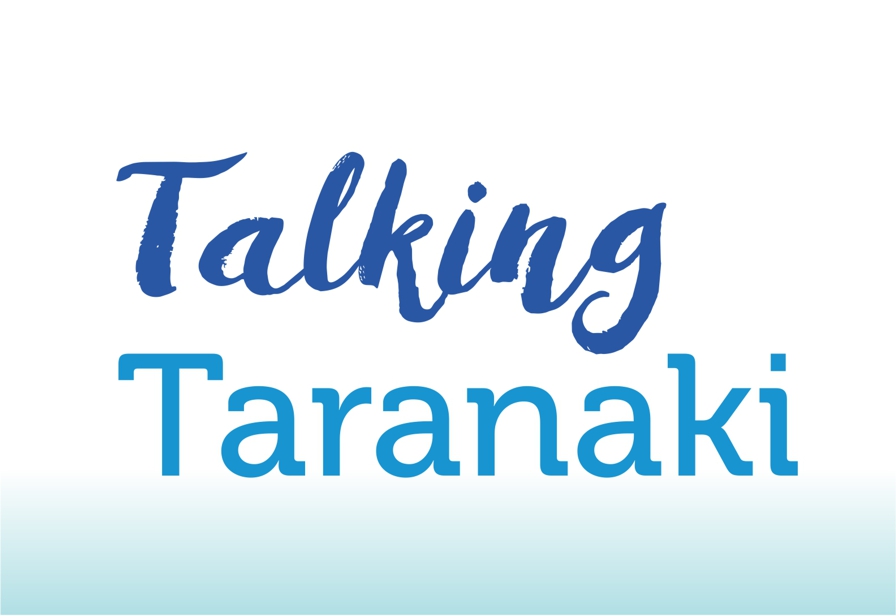
Talking Taranaki is Taranaki Regional Council's bimonthly newsletter.
In this issue
Keeping an eye on the community's opinion, keeping an eye on extreme weather in Taranaki, and keeping an eye on seasonal changes and events at Tūpare, Pukeiti and Hollard Gardens.
Chairman's chat
Take a look and let us know what you think
Kia ora tātou katoa, greetings to you all. The summer break already seems a distant memory as we immerse ourselves in another busy year. And on top of everything else, we had the disruption caused by Ex Tropical Cyclone Gita last month. Special greetings to those still dealing with the impacts of the storm.
As part of our work in taking Taranaki forward, we at the Council are currently reaching out for community comment and feedback on two important documents – our Long-Term Plan 2018/2028, and the Proposed Coastal Plan for Taranaki.

David MacLeod
The Long-Term Plan sets our direction of travel for the coming decade, with full details of budgets and programmes for the next three years. The Coastal Plan sets out community priorities for our precious coastline, what we aim to achieve and the policies and rules we’ll use to get there.
All submissions will be carefully considered before both these documents are finalised and adopted. Please take the time to look through the information we’ve made available on each of them, and let us know what you think.
Go to this website's home page and you’ll see links to each document near the top of the page. We look forward to hearing from you!
David MacLeod
Chair, Taranaki Regional Council
Supporting livelihoods
Feast and famine ... and fallout

A Council hydrologist check and calibrates equipment at a monitoring station in the remote eastern hillcountry.
From wet to dry to destructively stormy ... Taranaki Regional Council hydrological monitoring data highlights the way the weather has been testing the regional community – those making a living from the land as well as those in urban areas.
The Council monitors rainfall at 27 sites across the region.
The data is constantly updated and available on our website, along with wind measurements from seven sites.
Here’s what we’ve been seeing over the past nine months or so:
- A very wet winter – rainfall from June to August 2017 was not far from one and a half times normal at many sites. For example: Motunui 136%, Inglewood 142%, Stratford 122%, Cape Egmont 136%, Whareroa 127%.
- A very dry spring-summer – rainfall from October to December 2017 was half or less than half of normal at many sites. For example: Motunui 51%, Inglewood 46%, Stratford 43%, Cape Egmont 37%, Whareroa 47%.
- Destructive winds in February 2018 as cyclone systems from the tropics crossed the country. Gita brought widespread power and phone outages as well as extensive water-supply disruptions. Gusts of up to 140km/h were recorded in South Taranaki and 120km/h in North Taranaki.
“Data like this is essential, whether it’s tracking extremes or monitoring trends over time,” says the Council’s Director-Environment Quality, Gary Bedford. “We all know when it’s wet, when it’s dry and when it’s windy, but reliable data is vital to good decision-making, whether it’s about the environment, land management or a host of other fields. It can also feed into wider decisions about assistance for those affected by extreme events.”
To access Council data online, go to this website's home page and scroll down to the map.
Improving lifestyles
All seasons, all reasons
Tūpare through the seasons
Regular visitors to Tūpare know how beautiful it is all year round – and now digital magicians have compressed the seasonal kaleidoscope into this short but stunning video. Check it out.
Tūpare and the Council’s other public gardens, Pukeiti and Hollard Gardens, not only look great on any day of the year, but they are also venues for mostly free events that cater to a wide variety of interests. There’s something for everyone.
Events over the next couple of months include a fundraising concert for Taranaki Symphony Orchestra (Tūpare, 15 April), a rainforest walk and talk (Pukeiti, 15 April), a ‘show and tell’ session on maple trees (Tūpare, 20 May), and a workshop on chickens and the home garden (Hollard Gardens, 27 May). See you there!
See www.trc.govt.nz/gardens/ and www.trc.govt.nz/whats-on/ for more information.
Around & about the region
Region's pests in new focus
Taranaki has a new Regional Pest Management Plan that includes enforceable rules covering a variety of pest plants as well as possums. The Council adopted the new Plan after an extensive consultation process and it came into effect on 3 March. Alongside the Plan is a new Biosecurity Strategy that sets out regulatory and non-regulatory approaches to all harmful organisms, not just the ones covered by the rules in the Plan. The Council will distribute specific requirements and advice to relevant regional sectors.
Economic anchor-point
Port Taranaki remains a vital element in the regional economy despite ups and downs in its key freight commodities, a new economic assessment report shows. Its important role as a business enabler is shown in estimates that its users will generate $353 million for the regional GDP this year and more than 900 jobs. The Council is the 100% shareholder of Port Taranaki Ltd. “Its economic and strategic importance is front and centre of our thinking and decision-making,” says Council Chairman David MacLeod, a port company director.
Transport options widen

This wheelchair-hoist van is available in South Taranaki.
Subsidised door-to-door transport is now available for wheelchair users in South Taranaki under the region’s Total Mobility scheme. A wheelchair-hoist vehicle is part of the two-van fleet of South Taranaki Passenger Services Inc, the new Total Mobility provider in Hāwera. People with impairments that prevent them using public transport are eligible for assistance under the Council-administered Total Mobility scheme, which provides a 50% subsidy up to maximum of $20 (half of a $40 fare).